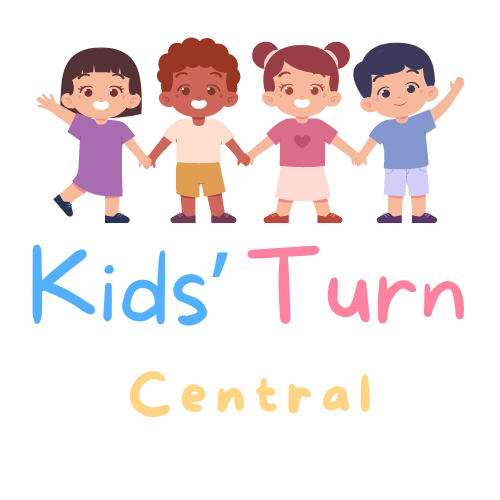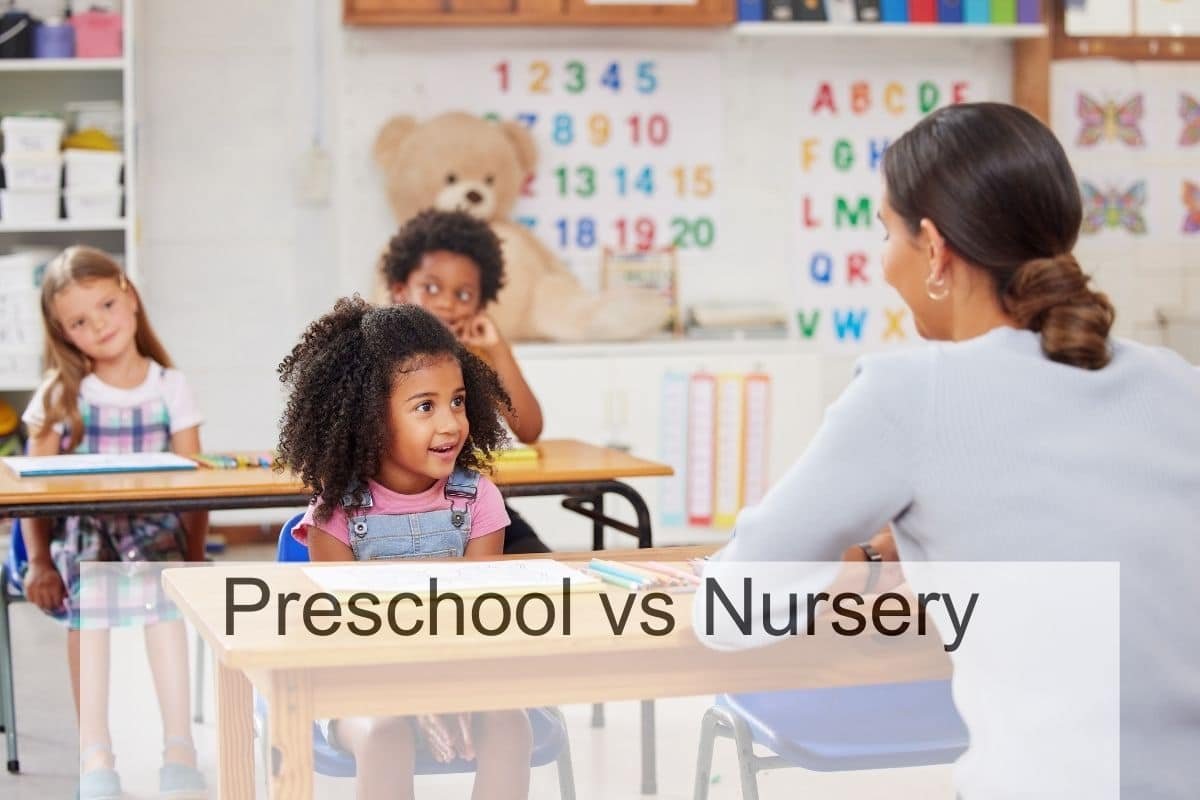Preschool and nursery are two types of early childhood education that parents can choose from for their young children. Both preschool and nursery schools offer a variety of benefits, but they also have their differences.

Preschool is typically designed for children between the ages of three and five, while nursery schools accept children both younger and older. Preschools tend to have a formal curriculum and trained teachers, though this increases their costs. On the other hand, nursery schools have a more relaxed environment and more flexible schedules, which can be more suitable for working parents who need full-time child care.
When deciding between preschool and nursery school, it’s important to consider your child’s needs, your budget, and your work schedule. You should also research and visit potential schools to get a sense of their teaching philosophy, curriculum, and facilities. Ultimately, the decision comes down to what’s best for your child and your family.
Defining Preschool and Nursery

As an educator, I often get asked about the differences between preschool and nursery. While both serve as a child’s first introduction to education, they have distinct differences.
Preschool is designed for children between the ages of three and five, typically before they start kindergarten. It focuses on preparing children for kindergarten through academic and social development. Preschools tend to have a formal curriculum and trained teachers, which increases their costs.
On the other hand, nursery is designed for children under the age of three and focuses on basic care and development. Nursery schools have a more relaxed environment and more flexible enrollment terms. They aim to provide care and supervision to young children, often from infancy.
Here is a table that summarizes the differences between preschool and nursery:
| Preschool | Nursery |
|---|---|
| For children aged 3-5 | For children under 3 years old |
| Formal curriculum and trained teachers | More relaxed environment and flexible enrollment terms |
| Focuses on preparing children for kindergarten through academic and social development | Focuses on basic care and development |
| Higher costs | Lower costs |
Age Range for Enrollment

As a parent, you may wonder what the difference is between preschool and nursery. One of the key differences is the age range for enrollment.
Preschool Age Criteria
Preschools typically accept children between the ages of 3 and 5. Some preschools may accept children as young as 2 or as old as 6, but this varies depending on the school. It is important to note that preschools are focused on early childhood education and preparing children for kindergarten.
Nursery Age Criteria
Nurseries, on the other hand, accept children from birth to 3 years old. They are focused on providing childcare and basic education to young children. Nurseries may offer flexible scheduling options, including full-day or half-day programs.
It is important to consider your child’s age and developmental needs when deciding between preschool and nursery. Preschool may be a better fit for older children who are ready for a more structured learning environment, while nurseries may be a better fit for younger children who need more individualized care.
Educational Focus

As a parent, choosing between a preschool and a nursery can be a tough decision. One of the factors to consider is the educational focus of each program.
Preschool Curriculum
Preschools typically offer structured learning environments with a focus on cognitive, social, and emotional development. They provide a curriculum that includes basic academic skills such as letters, numbers, and shapes, as well as social skills such as sharing, taking turns, and following rules.
In addition to classroom instruction, preschools often offer extracurricular activities such as music, art, and physical education. These activities help children develop a well-rounded set of skills that will prepare them for kindergarten and beyond.
Nursery Curriculum
Nurseries, on the other hand, tend to focus more on providing basic care and nurturing for young children. While some nurseries may offer educational activities and programs, their primary focus is on providing a safe and comfortable environment for infants and toddlers.
Nurseries may have a more relaxed approach to learning, with a focus on play-based activities that promote socialization and basic motor skills. They may also provide opportunities for children to explore their environment and develop their curiosity.
Learning Environment

As an early childhood educator, I understand the importance of creating a safe and nurturing learning environment for young children. When it comes to preschool and nursery, there are some differences in the learning environment that are worth considering.
Preschool Environment
Preschools are structured educational environments aimed at children who are below kindergarten age, typically between three and five years old. The environment in a preschool is designed to be developmentally appropriate, with a focus on cognitive, social, and emotional development.
The classroom is usually set up with learning centers, such as a reading area, a block area, a dramatic play area, and a science area. Each center is designed to promote exploration and learning through play. The classroom is also equipped with age-appropriate materials and tools that encourage children to be creative and curious.
Nursery Environment
In contrast, a nursery focuses on providing care and supervision to young children, often from infancy. The environment in a nursery is designed to be safe, comfortable, and nurturing.
The classroom is usually set up with cribs, play mats, and age-appropriate toys. The focus is on meeting the basic needs of the child, such as feeding, diapering, and sleeping. The caregivers in a nursery are trained to provide individualized care and attention to each child.
Duration and Scheduling
When it comes to duration and scheduling, there are notable differences between preschool and nursery.
Preschool Hours
Preschools typically operate on a set schedule, with sessions lasting between 2-5 hours each day. This allows for a structured learning environment and provides children with a routine they can follow.
Most preschools operate during the academic year, with breaks during holidays and summer months. This can be a good option for parents who work part-time or have flexible schedules.
Nursery Hours
Nurseries, on the other hand, tend to be more flexible with their hours of operation. Many offer extended hours, which can be convenient for parents who work full-time or have other commitments.
Some nurseries may operate on a year-round schedule, while others may close during holidays and summer months. It’s important to note that while nurseries may offer more flexibility, they may not provide the same level of structure and routine as a preschool.
Teacher-to-Child Ratio
As a teacher, I know that the teacher-to-child ratio is an essential factor in early childhood education. It determines how much attention and care each child can receive and how well the teacher can manage the classroom. In this section, I will discuss the teacher-to-child ratios for preschool and nursery, which are two common types of early childhood education.
Preschool Ratios
Preschools typically have a higher teacher-to-child ratio than nurseries. According to the National Association for the Education of Young Children (NAEYC), the recommended ratio for preschoolers is 1:10, which means one teacher for every ten children. The maximum group size for preschoolers is 20.
This ratio allows teachers to provide individualized attention to each child and manage the classroom effectively.
Nursery Ratios
Nurseries, on the other hand, have a lower teacher-to-child ratio than preschools. According to Childcare.gov, the recommended ratio for infants is 1:3, which means one teacher for every three infants. The maximum group size for infants is six. For toddlers, the ratio is 1:4, and the maximum group size is eight. For two-year-olds, the ratio is 1:6, and the maximum group size is twelve.
These ratios allow teachers to provide more hands-on care and attention to each child.
Parental Involvement
As a parent, it is important to be involved in your child’s early education. In both preschool and nursery, parental involvement can have a positive impact on your child’s learning and development.
In Preschool
In preschool, parents can be involved in a variety of ways. One way is by attending parent-teacher conferences. These conferences allow parents to meet with their child’s teacher to discuss their child’s progress and any concerns they may have.
Another way parents can be involved is by volunteering in the classroom. This can include helping with activities, reading to the class, or even chaperoning field trips.
In Nursery
In nursery, parental involvement is just as important. Parents can be involved by attending parent-teacher conferences and discussing their child’s progress with their teacher. They can also be involved by helping with activities at home, such as reading to their child or practicing basic skills like counting and colors. Additionally, parents can communicate with their child’s teacher regularly to stay informed about their child’s development and any concerns that may arise.
Preparation for Formal Education
As a parent, I want my child to be well-prepared for formal education. This means that they should have the necessary skills and knowledge to succeed in kindergarten and beyond. When it comes to preschool and nursery, there are some differences in how they prepare children for formal education.
Preschool Readiness
Preschool is designed to prepare children for kindergarten and beyond. It provides a structured educational environment that emphasizes learning and development. Preschoolers learn basic academic skills such as counting, letter recognition, and writing. They also learn social skills such as sharing, taking turns, and following directions.
Preschoolers are expected to have some basic skills before they start preschool. These skills include being able to use the bathroom independently, being able to dress themselves, and being able to communicate their needs and wants effectively. If your child is not yet ready for preschool, you may want to consider a nursery program.
Nursery Readiness
Nursery programs are designed to provide basic care and supervision to young children, often from infancy. They focus on meeting the physical and emotional needs of the child. Nursery programs do not typically provide structured educational activities, but they may provide some basic learning opportunities such as storytime or singing.
Nursery programs are a good choice for parents who need childcare while they work or attend school. They are also a good choice for parents who want their child to socialize with other children in a safe and nurturing environment. However, if you want your child to have a more structured educational experience, you may want to consider a preschool program.
Cost Comparison
Preschool Costs
When it comes to the cost of preschool, there are many factors to consider. According to the Center for American Policy, the average cost of preschool in the US is $889 per month, which amounts to an average of $10,668 per year. This cost may vary depending on the location, type of preschool, and number of days per week.
Some preschools offer full-day programs, while others offer half-day programs. Full-day programs are typically more expensive than half-day programs. Additionally, some preschools offer discounts for siblings or for paying tuition in advance.
It’s important to note that some preschools may offer financial assistance or scholarships for families who qualify. It’s worth researching the options in your area to find out what kind of financial assistance is available.
Nursery Costs
Nursery costs may also vary depending on location, type of nursery, and number of days per week. According to BabyCenter, the average cost of nursery care in the US is around $800 per month. However, this cost may be higher in some areas or for full-time care.
Like preschools, some nurseries may offer discounts for paying tuition in advance or for siblings. Some may also offer financial assistance or scholarships for families who qualify.
It’s important to note that the cost of nursery care may be tax-deductible, so it’s worth looking into this option as well.

